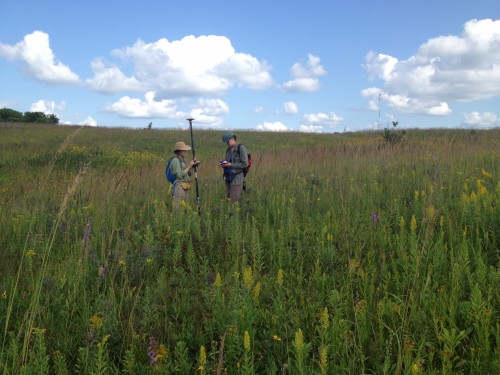This project builds on the Echinacea Project’s longitudinal demographic dataset from remnant prairies to explore the role fire plays in the reproduction of Echinacea angustifolia. In 2014, Claire Ellwanger and Jared Beck monitored the daily phenology of 324 flowering heads belonging to 143 plants that flowered in 2014 and gathered demographic information on 523 individuals within burned and unburned portions of Staffanson Prairie Preserve. Additionally, we collected 84 flower heads to assess seed set in 2014. Using this data and the data collected in previous years, we will integrate spatial, phenological, and demographic information from individuals at Staffanson Prairie to build a longitudinal database and evaluate the effects of prescribed fire on Echinacea survival and reproduction.
Our methods for collecting demographic and phenological data were identical to the procedures used in the projects “EA demo”, “phen in six remnants,” and “phen for Aii” except that we mapped nearest flowering neighbors. We mapped out to the 7th nearest flowering neighbor for focal plants on the SPP transect. Jared wrote an R function (looky) to streamline searching for nearest neighbors in the field. This function specifies a search radius and creates a map of all mapped flowering plants for a given site within that search radius. In addition to using looky, we targeted our searches near the edges of Echinacea clusters and where there were known Echinacea plants near the transect to increase the efficiency of our searches.
Read previous posts about this experiment.
Start year: 2007
Location: Staffanson Prairie Preserve
Products: Survey, demography, phenology, and style persistence datasets need to be made readyR. The Echinacea heads collected in 2014 are being processed at the Chicago Botanic Garden.
Overlaps with: EA demo, phen in six remnants, and phen for Aii

